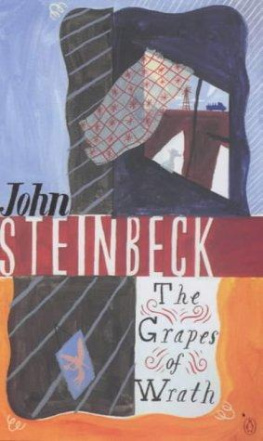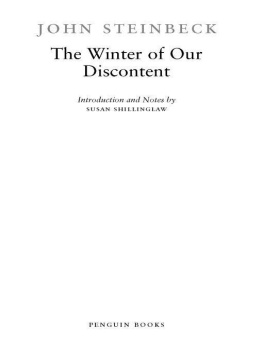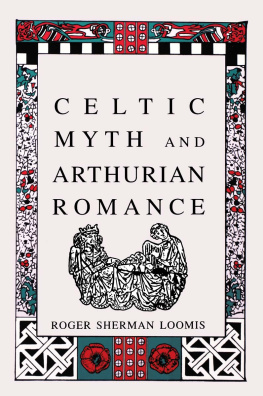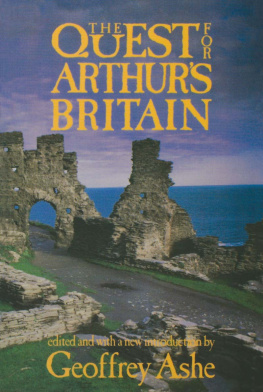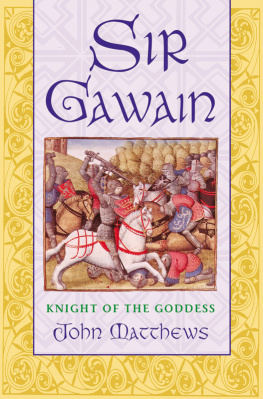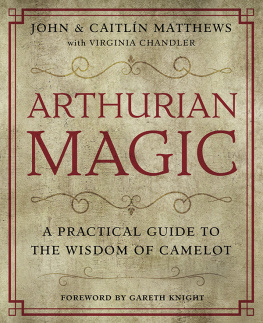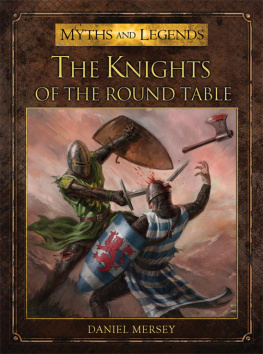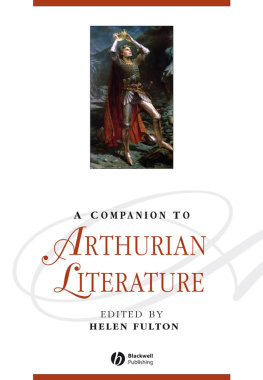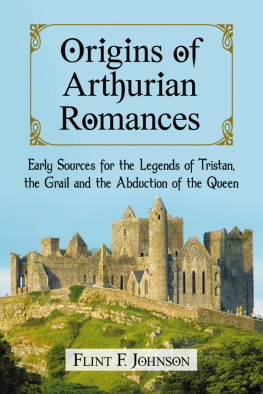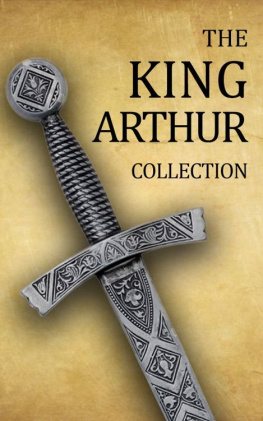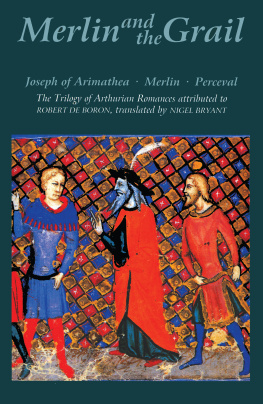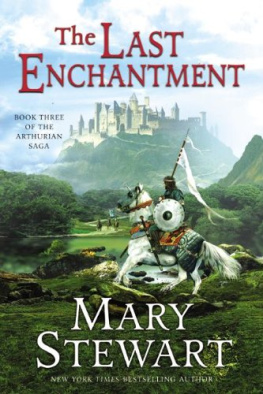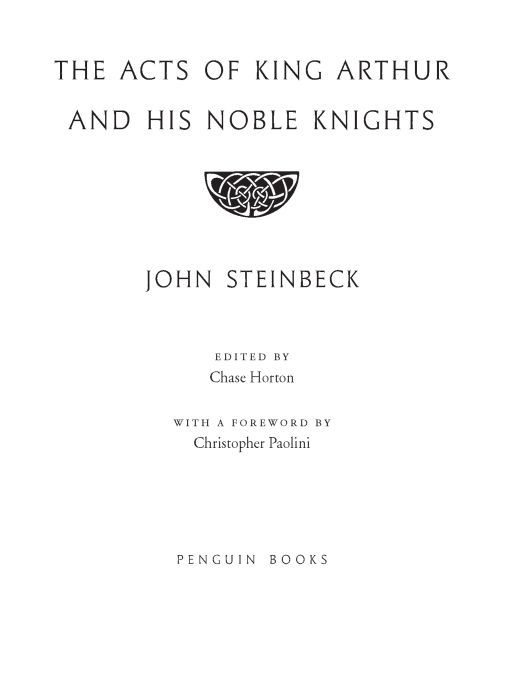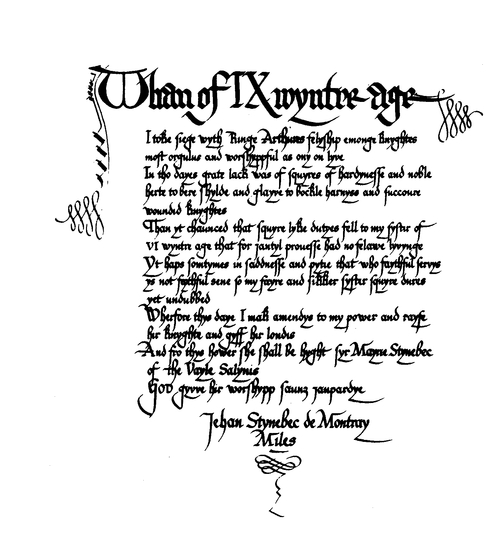Table of Contents
THE ACTS OF KING ARTHUR AND HIS NOBLE KNIGHTS
JOHN STEINBECK (1902-1968) was the author of The Grapes of Wrath, East of Eden, Of Mice and Men, and many other American classics. He was one of the most prolific and influential authors of his generation and received the Nobel Prize in Literature in 1962.
CHRISTOPHER PAOLINI is the author of the number-one New York Times bestsellers Eragon and Eldest. His most recent novel, Brisingr, completes the Inheritance series. He lives with his family in Paradise Valley, Montana.
(Previous page: The authors dedication in script by John Stanley. The literal transcription below is followed by a modern rendering.) Whan of IX wyntre age
I toke siege wyth Kinge Arthurs felyship emonge knyghtes most orgulus and worshyppful as ony on lyve
In tho dayes grate lack was of squyres of hardynesse and noble herte to bere shylde and glayve to bockle harnyss and succoure woundid knyghtes
Than yit chaunced that squyre lyke dutyes fell to my systir of vi wyntre age that for jantyl prouesse had no felawe lyvynge
Yt haps somtymes in saddnesse and pytie that who faythful servys ys not faythful sene so my fayre and sikker systir squyre dures yet undubbed
Wherefore thys daye I mak amendys to my power and rayse hir knyghte and gyff hir loudis
And fro thys hower she shall be byght Syr Mayrie Stynebec of the Vayle Salynis
God gyvve hir worshypp saunz jaupardye
Jehan Stynebec de Montray
Miles
When I was nine, I took siege with King Arthurs fellowship of knights most proud and worshipful as any alive.In those days there was a great lack of hardy and noble-hearted squires to bear shield and sword, to buckle harness, and to succor wounded knights. Then it chanced that squire-like duties fell to my sister of six years, who for gentle prowess had no peer living.It sometimes happens in sadness and pity that faithful service is not appreciated, so my fair and loyal sister remained unrecognized as squire.Wherefore this day I make amends within my power and raise her to knighthood and give her praise.And from this hour she shall be called Sir Marie Steinbeck of Salinas Valley.God give her worship without peril.
John Steinbeck of Monterey
Knight
FOREWORD
LIKE JOHN STEINBECK, I read the Caxton version of Sir Thomas Malorys Le Morte dArthur when I was nine. And like Steinbeck, I fell in love with that immortal book. It introduced me to an older, more potent form of the English languagethe arcane words and grammar fascinated meand to fantasy; for whatever its historical basis, the legend of King Arthur contains as many fantastical elements as any modern sword-and-sorcery novel.
The appeal of Le Morte dArthur has endured since it was published in 1485; few books have influenced Western culture the same way. One can hardly go a day without stumbling across references to Arthur, Merlin, Guinevere, Excalibur, the Knights of the Round Table, the Holy Grail, or some other fragment of Arthurian mythology. From Idylls of the King to Monty Pythons Spamalot, Malorys legacy surrounds us.
Although Le Morte dArthur occupies a treasured place within popular consciousness and contains thrilling accounts of derring-do, Malory can be hard going for those accustomed to a steady diet of movies, television, comic books, and the straightforward prose of todays writers. Its understandable, then, why Steinbeck wanted to retell Le Morte dArthur in a style more accessible to modern children. Numerous authors have tried their hand at this, but few as distinguished as Steinbeck.
Steinbeck began The Acts of King Arthur and His Noble Knights, the last novel he ever worked on, in 1958. At first he decided to, as he put it, translate Malory, but since Le Morte dArthur is already in Englishalbeit an archaic formSteinbeck ended up doing little more than paraphrasing. When his literary agent, Elizabeth Otis, and his editor, Chase Horton, read the initial chapters of The Acts of King Arthur, they expressed concern about the direction his work was taking. Their exact comments are lost to us, as only Steinbecks letters on this topic have been preserved; however, its clear from his subsequent responses on May 13 and 14, 1959, that they spurred him to reexamine his assumptions about the shape of The Acts of King Arthur.
That advice, combined with Steinbecks growing comfort with the project, gave him the confidence to tell the story the way he felt it ought to be told, regardless of Malorys precedent. One can watch as, paragraph by paragraph, Steinbecks writing comes to life over the course of the two chapters The Death of Merlin and Morgan Le Fay. For the first time the characters move and talk like real people, not like enigmatic icons of a lost age. The land they inhabit becomes a tangible place as Steinbeck lengthens his descriptions. His language is strong and direct, powered by his use of Anglo-Saxon words, a style all too rare in a genre dominated by clotted prose. And he finally allows himself to tender his own opinions and observations on the nature of humanity, the very things that make him a great writer.
The transformation is not entirely complete until the last and longest chapters: Gawain, Ewain, and Marhalt and The Noble Tale of Sir Lancelot of the Lake. To me these are masterpieces of both Arthurian fiction and fantasy in general. Here Steinbeck gives us Gawains handsome selfishness; Marhalts tragic battle with the giant and his bittersweet stab at romance; Ewains extraordinary training under the fierce old damosel Lyne (one of the most believable warrior women Ive encountered in fiction); and a Lancelot who seems superhuman in his abilities and determination, and all too vulnerable when it comes to Guinevere. These chapters, filled with action, comedy, and a deep appreciation for the joys and sorrows of life, are truly wonderful.
Its surprising, considering his earlier fidelity, how far Steinbeck strays from Le Morte dArthur in these segments. Not only does he create entire scenes, but he delves into the characters thoughts and feelings in a way Malory never did. He gives equal weight to the women, whom he portrays with a level of dignity, respect, and empathy rare in Malorys time.
Steinbeck conducted a vast amount of research before and during the writing of The Acts of King Arthur, studying hundreds of books and making multiple visits to locations associated with Le Morte dArthur. The fruits of his labor can best be seen in Gawain, Ewain, and Marhalt and The Noble Tale of Sir Lancelot. His England is a fully realized place, not an idealized fairy-tale kingdom conjured up by an author more familiar with cars and concrete than swords and horses. The setting is of an indeterminate historical perioda mlange of medieval and premedieval elementsand yet Steinbeck makes his world seem as real as ours. He furnishes us with precise details of the lands agriculture, architecture, class structure, economics, gender roles, and religion, details that rely on a thorough understanding of history. An excellent example of this is when Lancelot arrives at the abbey and speaks with the abbess. Those few pages are packed with information, yet Steinbeck weaves it into the narrative in such a graceful manner that it never feels as if hes lecturing us.


